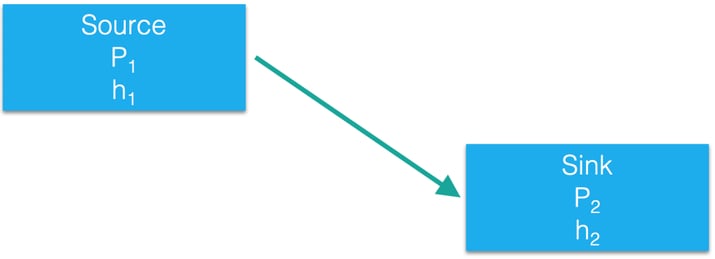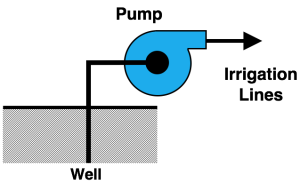This is the first blog post in our four-part educational series about pumps and irrigation pumping.
We’ve built a unique knowledge base for energy and water efficiency in the agricultural industry, in order to make the most of our energy and water resources. This first post lays the groundwork of basics of fluids and fluid mechanics, with the aim of providing an intuitive understanding of pumps and irrigation operations at farms.
Fluid mechanics
Fluids have a basic property that defines them: they're unable to resist shear forces – that is to say, they can be deformed to any shape and won't return to the starting shape on their own. Each individual particle of a fluid can move more or less freely past all other particles of that fluid. Due to these basic properties, all fluids will take the shape of whatever container they're placed in. The rigid boundary of the container pushes back on the particles and resists shear forces.
A fluid cannot be pulled on – only pushed.
Example: These elements are all in equilibrium. There is no motion.

Now the element on the right has a slight push, or net force, to the right. That is to say, pressure is unequal on that element. It will begin to move to the right.

This, in turn, decreases the leftward push (local pressure) on the middle element. Now it has a net force to the right and begins to move to the right. And so on…

Applied fluid mechanics
The following illustrates two cases of fluid motion. Question: How can we move water from the source at pressure P1 and height h1 to the sink at pressure P2 and height h2?

Case 1: Source is higher than sink. h1 > h2, P1 > P2. In this case, gravity does the work. Some real-world examples include streams, waterfalls, aqueducts, etc.

Case 2: All other cases require a pump to get water from source to sink! The pump itself creates an inlet pressure Pin lower than the pressure at the source Pout, and an outlet pressure higher than the pressure at the sink.

Generally in agricultural irrigation applications, the sink is the crop field or reservoir that the water is being delivered to. However, after the irrigation pump the water must travel through some kind of distribution line and this will always be at a higher pressure than the sink.
What exactly is a pump?
A pump is a machine used to push a fluid against a resistance. Yes, that’s really all!

For our next tutorial, we've reviewed some of the internal components of pumps. Check it out here.
- For more information about how Wexus' IoT software can drive energy and water efficiency, automation and cost savings for your farming operation, check out our home page here where you can schedule a demo of our software platform or sign up for a free proposal.
- And be sure to follow us for the latest updates and news on Twitter, LinkedIn and YouTube.
